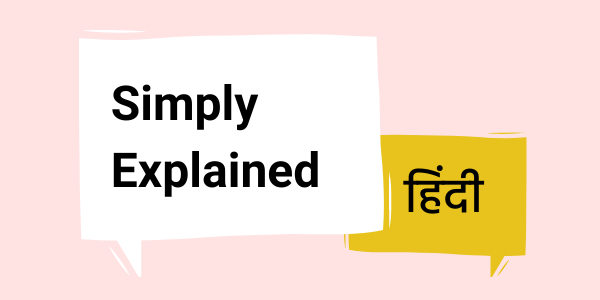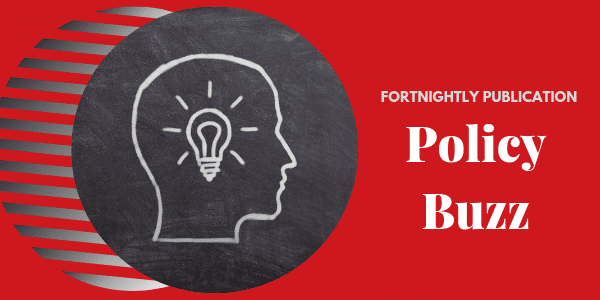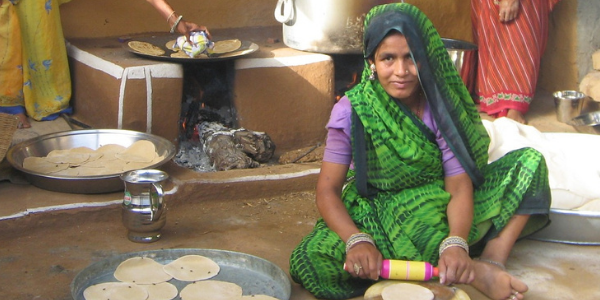भारत, कोविड-19 कोरोना जैसी वैश्विक महामारी से पिछले कई महीनों से जूंझ रहा है| हर क्षेत्र कोविड-19 की मार से प्रभावित हुआ है और पोषण उनमें से एक है| सितम्बर माह ‘राष्ट्रीय पोषण माह’ के रूप में मनाया जाता है तो इस नाते पोषण पर चर्चा करना भी बेहद जरुरी है| आकड़ों के ज़रिये पोषण स्थिति को सरल तरीके से समझें|
पोषण माह क्या है?
प्रतिवर्ष सितम्बर माह में महीने भर आंगनवाड़ी केन्द्रों में मनाये जाये वाले इस कार्यक्रम में विभिन्न गतिविधियों को शामिल किया जाता हैc इसमें:
- प्रसव पूर्व देखभाल,
- इष्टतम स्तनपान,
- एनीमिया,
- विकास की निगरानी,
- लड़कियों की शिक्षा,
- आहार,
- विवाह की सही उम्र,
- स्वच्छता और साफ-सफाई तथा स्वस्थ भोजन आदि विषय शामिल होते हैं|
इन गतिविधियों का मकसद सामाजिक और व्यवहार परिवर्तन संचार (जिसको Social and Behavioural Change Communication कहा जाता है) पर ध्यान केंद्रित करना होता है|
पोषण अभियान क्या है?
पोषण माह ‘राष्ट्रीय पोषण मिशन’ के तहत आता है| मिशन की शुरुआत 2018 को जन आंदोलन और जनभागीदारी से देश को कुपोषण मुक्त बनाने के उद्देश्य से हुई थी| मुख्य रूप से महिलाओं और बच्चों के पोषण स्तर में निरंतर सुधार करना शामिल है|
पोषण माह 2020, दो मुख्य उद्देश्यों पर आधारित है जिसमें पहला अति कुपोषित बच्चों को चिन्हित करना और उनकी मॉनिटरिंग करना तथा दूसरा किचन गार्डन को बढ़ावा देना शामिल है| किचन गार्डन के अंतर्गत जहाँ पर भी आंगनवाड़ी केंद्र (जो की भारत सरकार की समन्वित बाल विकास सेवा आई.सी.डी.एस का हिस्सा है) के पास थोड़ा बहुत जमीन है, उसके परिसर में कार्यकर्ता एवं सहायिका द्वारा साग-सब्जियां उगाई जायेंगी ताकि बच्चों को पोषण युक्त आहार वहीं पर तैयार किया जाये|
पोषण अभियान का लक्ष्य:
इसका लक्ष्य कुपोषण और जन्म के समय बच्चों का वज़न कम होने संबंधी समस्याओं को प्रत्येक वर्ष 2 प्रतिशत तक कम करना है| मिशन का एक मुख्य लक्ष्य बच्चों में उनकी लम्बाई कम बढ़ने की समस्या (स्टंटिंग) में 2 प्रतिशत की कमी करना भी है| मिशन का लक्ष्य एनीमिया से पीड़ित बच्चों, महिलाओं तथा किशोरों की संख्या में प्रतिवर्ष 3 प्रतिशत की कमी लाना है|
चुनौतियाँ कम नहीं हैं:
स्वास्थ्य और परिवार कल्याण मंत्रालय, भारत सरकार की व्यापक राष्ट्रीय पोषण सर्वेक्षण 2016-18 की रिपोर्ट के अनुसार:
- भारत में 0-4 वर्ष के औसतन 35 प्रतिशत बच्चे अपनी आयु के अनुरूप छोटे कद के हैं|
- बिहार, मध्य प्रदेश, राजस्थान और उत्तर प्रदेश सहित कई सबसे अधिक आबादी वाले राज्यों में यह औसत 37 प्रतिशत से 42 प्रतिशत है|
- 0-4 वर्ष के औसतन 33 प्रतिशत बच्चे अपनी आयु की तुलना में कम वजन के हैं|
- 1-4 वर्ष के पूर्व-विद्यालयी 41 प्रतिशत बच्चे, 5-9 आयु वर्ग के 24 प्रतिशत, स्कूल जाने वाले तथा 10-19 आयु वर्ग के 28 प्रतिशत किशोर-किशोरियों में एनीमिया की कुछ मात्रा पायी गयी है|
यूनिसेफ की एक रिपोर्ट के अनुसार, भारत में हर साल मरने वाले बच्चों में से 69 फीसदी (5 वर्ष से कम उम्र) बच्चों की मौत कुपोषण की समस्या की वजह से हो जाती है| केवल 2018 में ही 8,82,000 बच्चों की मौत कुपोषण की वजह से हुई है| रिपोर्ट के मुताबिक़ भारत में हर दूसरी महिला एनीमिक है तथा किशोरावस्था की लड़कियों को भी उसी उम्र के लड़कों की तुलना में दोगुना से अधिक एनीमिक पाया गया है|
भूख भी एक बड़ी समस्या:
ग्लोबल हंगर इंडेक्स (GHI) रिपोर्ट-2019 के मुताबिक भारत की रैंकिंग अन्य देशों के मुकाबले काफी खराब है| यह रिपोर्ट किसी देश में कुपोषित बच्चों के अनुपात, पांच साल से कम आयु वाले बच्चे जिनका वजन या लंबाई उम्र के हिसाब से कम है और पांच साल से कम उम्र वाले बच्चों में मृत्यु दर के आधार पर तैयार की जाती है|
ग्लोबल हंगर इंडेक्स 2019 में भारत अपने पड़ोसी देशों नेपाल, पाकिस्तान और बांग्लादेश से पीछे 117 देशों में 102 वें स्थान पर है| तो इससे मालुम चलता है कि भारत के लिए अपनी आगामी पीढ़ी के लिए पोषण युक्त आहार तो दूर, भर पेट खाना उपलब्ध करवाना ही चुनौती बना हुआ है|
महामारी के दौरान पोषण:
कोविड-19 की वजह से पिछले कई महीनों से आंगनवाड़ी केन्द्रों, स्कूलों में पोषण युक्त आहार बच्चों को नहीं मिल पा रहा है तो आने वाले दिनों में कुपोषण की स्थिति पेचीदा हो सकती है| हमारे ‘इनसाइड डिस्ट्रिक्स’ सीरीज में कुछ ऐसे ही पहलू साक्षात्कार कैप्चर किये गए हैं| जैसा की मेरे साथी लिखते हैं:
पिछले कुछ वर्षों में केंद्र सरकार के पोशण अभियान और इसके अंतर्गत चलाये जाने वाले विभिन्न अभियानों के माध्यम से कुपोषण को खत्म करने पर ख़ास ध्यान दिया गया है. महामारी के प्रकोप और उसके बाद के लॉकडाउन ने इनमें से कई गतिविधियों को रोक दिया है. कुपोषण के खिलाफ भारत की निरंतर लड़ाई को एक बार फिर से गतिशील मार्ग पर लाना बहुत महत्वपूर्ण है.
अंत में मैं यही कहना चाहूँगा कि जिस तरह की वर्तमान पोषण स्थिति है उससे तो मालूम चलता है कि सरकार के लिए कुपोषण से जल्दी पार पाना इतना आसान नहीं होगा| यदि भारत को इस सब से उभारना है तो समाधान के तौर पर सरकार को पंचायती राज एवं विभिन्न सामाजिक संस्थाओं के साथ मिलकर उन सभी तक पोषण युक्त भोजन सुनिश्चित करवाना होगा, जिन्हें अभी प्रतिदिन खाना तक नसीब नहीं हो पा रहा है| अधिकारियों को भी अपने कार्यालयों से निकलकर जमीनी स्तर पर सामूहिक भागीदारी से अधिक से अधिक रचनात्मक कार्यक्रम/गतिविधियाँ करनी होंगी, तभी इस लड़ाई से आने वाले वर्षों में जीत मिल पाएगी|
इंद्रेश Accountability Initiative में सीनियर पैसा एसोसिएट के तौर पर काम कर रहे हैं|
*********************
इसको अपने दोस्तों के साथ डाउनलोड (माउस पर राइट क्लिक कर के इमेज सेव करें) कर के शेयर करें:












